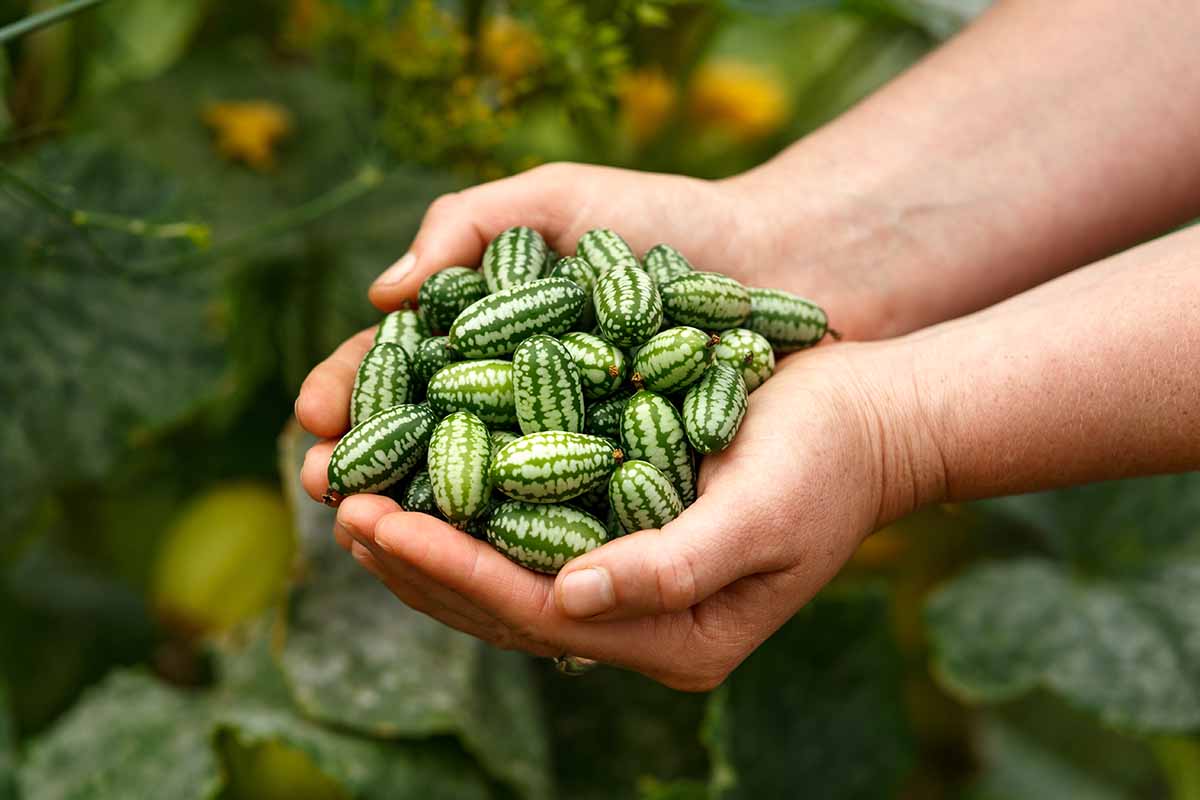
Mouse melons, also known as Mexican sour gherkins or cucamelons, are tiny fruits that look like miniature watermelons but taste like cucumbers with a hint of citrus. These adorable, grape-sized veggies are not only cute but also packed with nutrients. Originating from Mexico and Central America, they have been a staple in local diets for centuries. Their unique appearance and refreshing taste make them a fun addition to salads, salsas, and pickles. Curious about these little wonders? Here are 15 fascinating facts about mouse melons that will make you want to grow them in your garden or add them to your next meal!
Key Takeaways:
- Mouse melons, also known as Mexican sour gherkins, are tiny fruits that look like miniature watermelons but taste like cucumbers with a hint of lime. They are low in calories, high in fiber, and packed with vitamins and minerals, making them a healthy and delicious snack option.
- Growing mouse melons can be a fun and rewarding experience for gardeners. They thrive in warm climates, are low-maintenance, and can be used in a variety of dishes, adding a unique flavor and texture to salads, pickles, and even cocktails.
What is a Mouse Melon?
Mouse melons, also known as Mexican sour gherkins or cucamelons, are tiny fruits that look like miniature watermelons but taste like cucumbers with a hint of lime. These unique fruits are native to Mexico and Central America and have been cultivated for centuries.
- Mouse melons are about the size of a grape, typically measuring around 1-2 inches in length.
- Despite their small size, they pack a punch with their crisp texture and refreshing flavor.
- The scientific name for mouse melons is Melothria scabra.
Growing Mouse Melons
Growing mouse melons can be a fun and rewarding experience for gardeners of all levels. They thrive in warm climates and can be grown in containers or directly in the ground.
- Mouse melons prefer full sun and well-drained soil.
- They are relatively low-maintenance and resistant to many common pests and diseases.
- These plants are vigorous climbers, so providing a trellis or support structure is beneficial.
Nutritional Benefits of Mouse Melons
Mouse melons are not only delicious but also packed with nutrients. They can be a healthy addition to your diet, offering various vitamins and minerals.
- Mouse melons are low in calories, making them a great snack for those watching their weight.
- They are rich in fiber, which aids in digestion and promotes a healthy gut.
- These tiny fruits contain vitamins C and K, as well as potassium and antioxidants.
Culinary Uses of Mouse Melons
Mouse melons can be used in a variety of dishes, adding a unique flavor and texture. They can be eaten fresh, pickled, or incorporated into recipes.
- Fresh mouse melons make a great addition to salads, providing a crunchy texture and a burst of flavor.
- They can be pickled just like cucumbers, creating a tangy and refreshing snack.
- Mouse melons can be used as a garnish for cocktails, adding a fun and decorative touch.
Fun Facts About Mouse Melons
Mouse melons have some interesting characteristics and cultural significance that make them even more fascinating.
- In Mexico, mouse melons are known as "sandíitas," which means "little watermelons."
- These fruits have been cultivated since pre-Columbian times, showing their long history and importance in traditional agriculture.
- Mouse melons are often grown as ornamental plants due to their attractive appearance and unique fruits.
Final Thoughts on Mouse Melons
Mouse melons, also known as Mexican sour gherkins, are tiny fruits that pack a punch. These little cucumbers look like mini watermelons but taste like a tangy cucumber. They're not just cute; they're also nutritious, loaded with vitamins and antioxidants. Easy to grow, mouse melons thrive in warm climates and need minimal care. They can be eaten fresh, pickled, or added to salads for a unique twist.
Their versatility makes them a hit in kitchens and gardens alike. Whether you're a seasoned gardener or a newbie, mouse melons are a fun and rewarding plant to cultivate. Plus, they add a quirky touch to your garden and a burst of flavor to your dishes. So, next time you're looking for something different to grow or eat, give mouse melons a try. You won't be disappointed!
Frequently Asked Questions
Was this page helpful?
Our commitment to delivering trustworthy and engaging content is at the heart of what we do. Each fact on our site is contributed by real users like you, bringing a wealth of diverse insights and information. To ensure the highest standards of accuracy and reliability, our dedicated editors meticulously review each submission. This process guarantees that the facts we share are not only fascinating but also credible. Trust in our commitment to quality and authenticity as you explore and learn with us.


